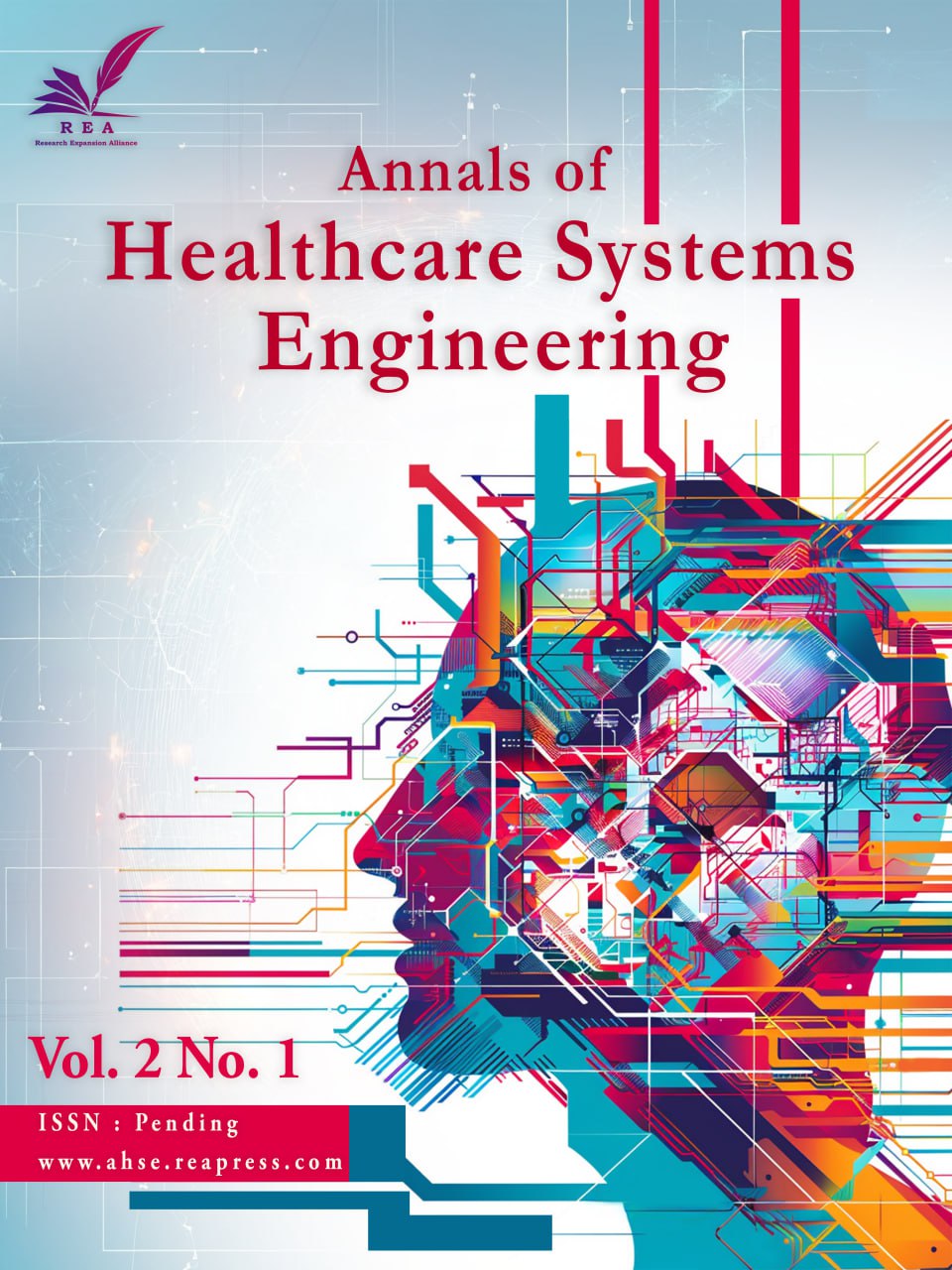Leveraging Blockchain and IoT for Secure and Scalable Healthcare Innovations
Abstract
Blockchain is a distributed technology with the potential to revolutionize various industries. Since its introduction in 2008, it has found applications in financial transactions, online trading, smart contracts, supply chain management, and identity verification. Blockchain consists of interconnected blocks containing cryptographic data, the previous block’s hash, a timestamp, and transaction data. This structure ensures system security and prevents cyberattacks such as 51% and Distributed Denial of Service (DDoS) attacks. Despite the widespread adoption of the Internet of Things (IoT), developing a secure and privacy-compliant model remains a challenge. Integrating blockchain with IoT enhances security, scalability, energy efficiency, and data management. In recent years, electronic Health (eHealth) has gained significant attention. Healthcare applications include hospital networks, pharmaceutical supply chains, blood banks, and insurance systems. However, challenges such as patient privacy, large medical data management, and collaboration issues highlight blockchain’s importance in healthcare. Blockchain can improve security in IoT and eHealth by preventing unauthorized data manipulation. Its applications in remote medical monitoring, pharmaceutical supply chains, counterfeit drug prevention, and patient consent processes are expanding. However, challenges such as high energy consumption in Proof of Work (PoW), lack of international standards, and reluctance to share medical data hinder its adoption in healthcare. This paper reviews blockchain and IoT concepts, assessing their feasibility in healthcare. It analyzes scalability, security, and adoption challenges while proposing solutions to overcome these barriers.
Keywords:
Blockchain, Security, Internet of things, Healthcare, Patient privacy, Medical data managementReferences
- [1] Sharma, P. K., Chen, M. Y., & Park, J. H. (2018). A software defined fog node based distributed blockchain cloud architecture for IoT. IEEE access, 6, 115–124. https://doi.org/10.1109/ACCESS.2017.2757955
- [2] Li, G., Dong, M., Yang, L. T., Ota, K., Wu, J., & Li, J. (2020). Preserving edge knowledge sharing among IoT services: A blockchain-based approach. IEEE transactions on emerging topics in computational intelligence, 4(5), 653–665. https://doi.org/10.1109/TETCI.2019.2952587
- [3] Nakamoto, S., & Bitcoin, A. (2008). A peer-to-peer electronic cash system. Bitcoin, 4(2), 15. https://bitcoin. org/bitcoin. pdf
- [4] Wood, G. (2014). Ethereum: A secure decentralised generalised transaction ledger. Ethereum project yellow paper, 151(2014), 1–32. https://B2n.ir/yx9330
- [5] Notra, S., Siddiqi, M., Habibi Gharakheili, H., Sivaraman, V., & Boreli, R. (2014). An experimental study of security and privacy risks with emerging household appliances. 2014 IEEE conference on communications and network security (pp. 79–84). IEEE. https://doi.org/10.1109/CNS.2014.6997469
- [6] Sivaraman, V., Chan, D., Earl, D., & Boreli, R. (2016). Smart-phones attacking smart-homes. Proceedings of the 9th ACM conference on security & privacy in wireless and mobile networks (pp. 195–200). New York, NY, USA: Association for Computing Machinery. https://doi.org/10.1145/2939918.2939925
- [7] Chakravorty, A., Wlodarczyk, T., & Rong, C. (2013). Privacy preserving data analytics for smart homes. 2013 IEEE security and privacy workshops (pp. 23–27). IEEE. https://doi.org/10.1109/SPW.2013.22
- [8] Li, G., Dong, M., Yang, L. T., Ota, K., Wu, J., & Li, J. (2020). Preserving edge knowledge sharing among IoT services: A blockchain-based approach privacy and security in computational intelligence. IEEE transactions on emerging topics in computational intelligence (TETCI), 4(5), 653 - 665. https://doi.org/10.1109/TETCI.2019.2952587
- [9] Roshan, N. P., & Pavithra, N. (2020). A bird eye view on Lsb (Lightweight scalable blockchain) in the platform of internet of things. International research journal of engineering and technology (IRJET), 7(9), 2819–2825. https://B2n.ir/np6846
- [10] Dwivedi, A. D., Malina, L., Dzurenda, P., & Srivastava, G. (2019). Optimized blockchain model for internet of things based healthcare applications. 2019 42nd international conference on telecommunications and signal processing (TSP) (pp. 135–139). IEEE. https://doi.org/10.1109/TSP.2019.8769060
- [11] Dorri, A., Kanhere, S. S., & Jurdak, R. (2017). Towards an optimized blockchain for IoT. Proceedings of the second international conference on internet-of-things design and implementation (pp. 173–178). New York, NY, USA: Association for Computing Machinery. https://doi.org/10.1145/3054977.3055003
- [12] Liu, J., Xiao, Y., & Chen, C. L. P. (2012). Authentication and access control in the internet of things. 2012 32nd international conference on distributed computing systems workshops (pp. 588–592). IEEE. https://doi.org/10.1109/ICDCSW.2012.23
- [13] Christidis, K., & Devetsikiotis, M. (2016). Blockchains and smart contracts for the internet of things. IEEE access, 4, 2292–2303. https://doi.org/10.1109/ACCESS.2016.2566339
- [14] Wu, Y., Hu, Y., Chen, M., Yesha, Y., & Debbah, M. (2024). Blockchains for internet of things: Fundamentals, applications, and challenges. IEEE network, 38(6), 443–450. https://doi.org/10.1109/MNET.2024.3410640
- [15] Yang, W., Aghasian, E., Garg, S., Herbert, D., Disiuta, L., & Kang, B. (2019). A survey on blockchain-based internet service architecture: Requirements, challenges, trends, and future. IEEE access, 7, 75845–75872. https://doi.org/10.1109/ACCESS.2019.2917562
- [16] Mahmood, M. S., & Al Dabagh, N. B. (2023). Blockchain technology and internet of things: review, challenge and security concern. International journal of electrical and computer engineering, 13(1), 718. https://doi.org/10.11591/ijece.v13i1.pp718-735
- [17] Hannan, S. A. (2023). A blockchain technology and internet of things to secure in healthcare system. Journal of advance research in computer science & engineering issn, 2456, 3552. https://www.researchgate.net/publication/370034212
- [18] Rahman, A., Wadud, M. A. H., Islam, M. J., Kundu, D., Bhuiyan, T. M. A. U. H., Muhammad, G., & Ali, Z. (2024). Internet of medical things and blockchain-enabled patient-centric agent through SDN for remote patient monitoring in 5G network. Scientific reports, 14(1), 5297. https://doi.org/10.1038/s41598-024-55662-w
- [19] Bak, O., Braganza, A., & Chen, W. (2025). Exploring blockchain implementation challenges in the context of healthcare supply chain (HCSC). International journal of production research, 63(2), 687–702. https://doi.org/10.1080/00207543.2023.2286491




